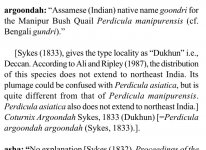joekroex
Joek Roex
I have been trying to think laterally about this, to move away from Lidia/Lidie as a name. I looked at anagrams (adieu li); I followed Mulsant's publications, and found (as I know next to nothing about hummingbirds) through the index of plates of his Histoire naturelle des oiseaux-mouches that there are quite a few genera of hummingbirds that have the prefix eu-, i.e. from Greek ευ = beautiful. So far nothing new.
But the latter kept nagging. Let's take the eu- prefix as is, and focus on the word lidia. I ended up going back to Wiktionary. In Spanish lidia is a form of the verb lidiar = to fight, battle, argue, litigate, oppose, etc. I tried to find whether this bird is particularly aggressive, but found no accounts of such.
I ended up on the Portuguese page of lídia, which it tells me is an adjective relating to Lydian > Lydia.
Greek etymology of Lydia tells us: Λυδία (Ludía, “the region of Lydia”), from λυδία (ludía, “beautiful one, noble one”).
Could it be that Eulidia is a tautological construction: both eu- and lidia meaning beautiful, the beautiful one?
But the latter kept nagging. Let's take the eu- prefix as is, and focus on the word lidia. I ended up going back to Wiktionary. In Spanish lidia is a form of the verb lidiar = to fight, battle, argue, litigate, oppose, etc. I tried to find whether this bird is particularly aggressive, but found no accounts of such.
I ended up on the Portuguese page of lídia, which it tells me is an adjective relating to Lydian > Lydia.
Greek etymology of Lydia tells us: Λυδία (Ludía, “the region of Lydia”), from λυδία (ludía, “beautiful one, noble one”).
Could it be that Eulidia is a tautological construction: both eu- and lidia meaning beautiful, the beautiful one?







